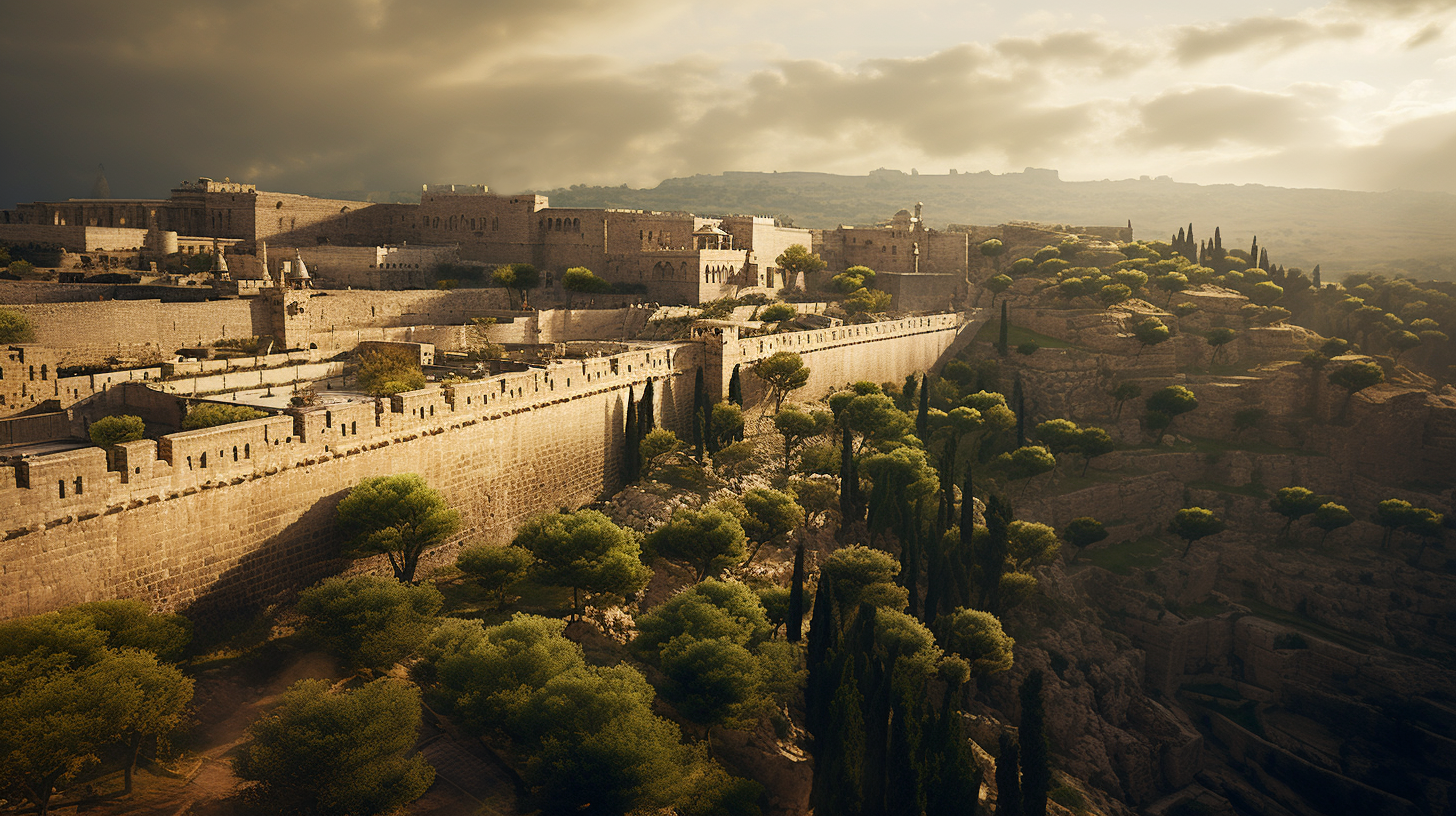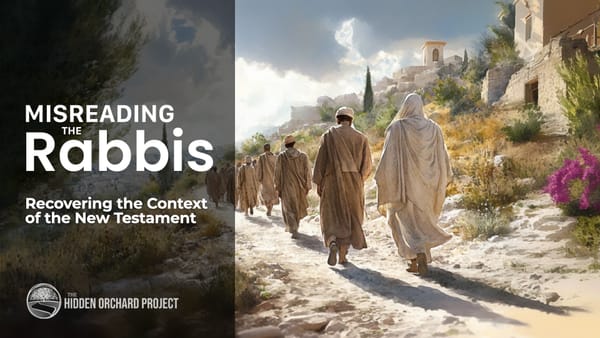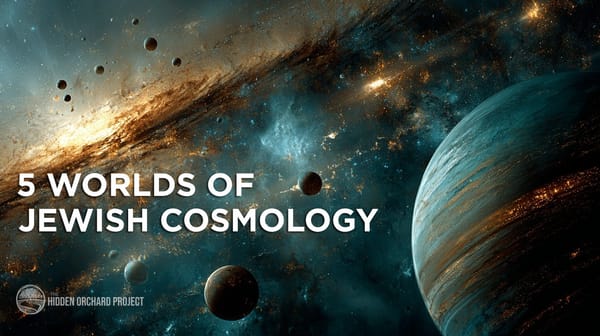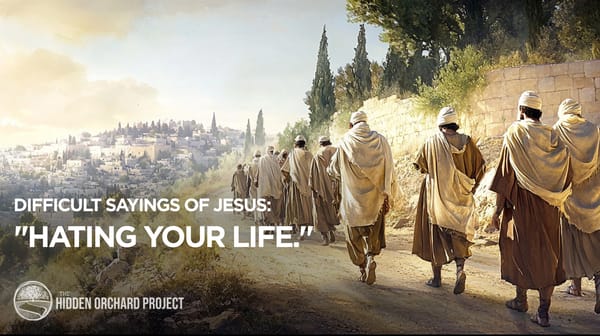From Midrash to Manger: The Intriguing Interplay of Jesus's Birth and Rabbinic Tradition
When we look closely at the birth narratives in the Gospels, we'll find these stories conform to an archetypal pattern, sharing many parallels with the Rabbinic Midrash. How does this knowledge alter our view of these texts?
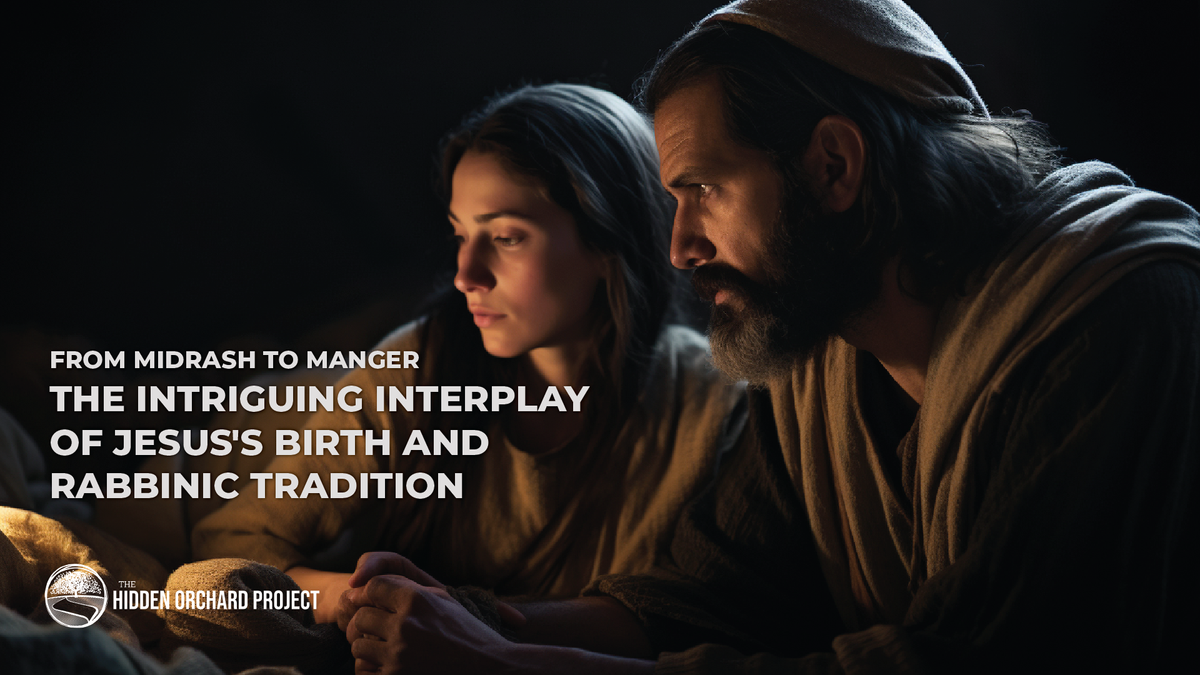
As holiday lights adorn homes, the Christmas season unfolds with its familiar themes of angelic proclamations, divine births, miraculous events, and the promise of salvation.
Yet, hidden beneath the surface of the festivities lies a provocative revelation: the very essence and imagery of these stories are sourced from within the Jewish Midrashic tradition.
The Jewish Roots of the Christmas Story
This becomes apparent when we compare the narrative accounts in Luke and Matthew with the Rabbinic tradition. We'll find these stories conform to an archetypal pattern.
Perhaps startling for some, these accounts are thus not entirely new. We'll find the names change, but the key roles appear in each version.
The villains, played by either Nimrod, Pharoah, or Herod all seek to destroy a child redeemer in their time - these roles played by Abraham, Moses, and Jesus, respectively. The astrologers, played by themselves, serve as the messengers of these good tidings.
What becomes more clear, is that these commonalities unite them under a larger meta-narrative. Incidentally, this might help to account for the differences in the Gospel surrounding Jesus's birth.
Let's look at a few of these similarities.
The Astrologers and Wisemen "From The East"
The Midrashic and Gospel accounts share the presence of astrologers, or Magii. In the New Testament, the word in Greek is "mágos", or the Latin, "Magus" and can be connected to 'Magicians.'
While many believe these were pagans, some scholars indicate that they may not have been. It is possible they might have been religious, Jewish mystics from the East (Babylon), who excelled in the astrological knowledge from the school of Daniel.
An idea we've covered before - since the Hebrew word for East is the same as Ancient, the phrase 'from the East²' could be a hint that these Astrologers are connected to higher-level wisdom or ancient knowledge.

Nevertheless, they have secured a key role and tradition all their own outside of the Gospel account.
In the literary structure, the astrologers serve as timely messengers, interpreting the prophetic signs in the stars. They appear in the birth narratives of Abraham, Moses, and Jesus.
Let's look at some more similarities.
Abraham's Birth
In the Gospel of Matthew, the birth narrative of Jesus draws many significant parallels with the story of Abraham, the father of the Jewish nation; and Moses, the redeemer of the nation.
In the Midrash³, Abraham's birth story involves some familiar events. We read:
And in the night that Abram was born, all the servants of Terach (Abraham's father) and all the wise men and the astrologers of Nimrod came, and they ate and drank in the house of Terach and they greatly rejoiced all night. And when the wise men and the astrologers left Terach's house they lifted up their eyes unto heaven on that night to observe the stars; and behold a very large star came from the rising of the sun and ran about in the heavens and swallowed up four stars from the four winds of heaven.
Here, we see a sign in the stars, astrologers, and the villain - Nimrod, who wants to stop the prophecy from reaching fulfillment.
In a similar fashion to the Gospel of Matthew, the astrologers deliver their prediction that the child will be the leader of a great nation that will challenge Nimrod's reign - then, quietly escape before Nimrod extracts more information from them.
In his anger, Nimrod plans the death of the infant. In reaction, Terach flees, taking the mother and the infant Abraham into hiding until the danger passes.
As in the case of the Gospels, the story highlights the battle between the forces of good and evil, and how the Divine Providence works behind the scenes to thwart the ways of these powerful earthly rulers.
Moses and the Infant Savior
The parallels continue with echoes of the story of Moses's birth in the Midrash.
As the Torah recounts, Moses, as an infant, faced the threat of death from Pharoah, which led his mother (Yocheved) to place him in a basket on the Nile River. Similarly, the Gospel of Matthew recounts how the infant Jesus faced the threat of King Herod.
In the Gospels, Jesus's parents flee to Egypt to protect him, mirroring the escape of the baby Moses from the clutches of Pharaoh.
Other tertiary elements exist as well. For example, the mention of gold, silver, and pitch/straw exists in the birth narratives of Abraham and Moses. Though some of these are not explicit in the Gospels, they have made their way into the Nativity scene via tradition.
Light is also a key feature of the birth narratives, sometimes through a unique star or through Divine light⁴. As something of great importance in the Rabbinic tradition, we see this element at the birth of Moses⁵ and Abraham, both of whom brought a great revelation of the Creator to the world.
In Moses's story, we see the astrologers again, bearing a similar message. Commentator Rashi writes:
On the day when Moses was born his astrologers said to Pharoah, “Today their deliverer has been born, but we know not whether he is born of an Egyptian father or of an Israelite; but we see by our astrological art that he will ultimately suffer misfortune through water.” - Exodus Rabbah 1:18 – Rashi on Numbers 20:13
Early on, Moses is seen as a future redeemer for Israel. In the Midrash, Miriam makes the following prophecy of her baby brother:
"In the future, Mother will give birth to a child that will be the savior of the Jewish people."
We can see the echoes of this statement in the Gospel of Luke⁶ as Mary, whose Hebrew name is Miriam, makes a similar proclamation.
Many more themes exist, too many for the span of this article, but the parallels are astounding and worth exploring.
Scandalous and Divine Births
Perhaps most interesting, to me, is the scandal that surrounds the births of the redeemers. It is a common occurrence that special souls seem to come into the world through questionable circumstances.
As such, the Hebrew Bible records many scandalous [intimate] events that lead up to the line of David. For one example, the incident with Lot's daughters produces the line of Moab, who ultimately becomes a part of David's bloodline through Ruth.
The Midrash pushes these further. Paraphrasing the tradition⁷ of Moses's birth; the dangers imposed through Pharoah's order to execute the Jewish baby boys caused many to reconsider the logic of having children at such a time.
Moses's father, Amram, declared that Jewish families should observe abstinence. Through this, Amram divorced his wife, Yocheved, and separated from her.
Amram's daughter, Miriam, objected, saying: "Father, your ruling is harsher than Pharoah's," indicating that Amram's good intentions also prevented Jewish girls from being born as well.
In agreement, Amram returned to his wife⁸. Immediately, Amram noticed the signs that she was now with child - causing momentary alarm. The scandal was quickly resolved as they realized the timing, and that she had become pregnant before their separation, not after.
We see a similar scandal in the birth narrative of David where his mother is found to be unexpectedly pregnant, with signs pointing to adultery⁹. However, in this case, as well, we learn everything was above reproach, despite appearances.
In Summary
The similarities between the Gospel birth narratives and Midrash extend beyond specific events to encompass a vast array of symbolic patterns and themes. It reframes the Gospel writings back into the genre of Rabbinic literature, imposing a new paradigm from which to view them.
While each narrative maintains its unique characteristics, the shared themes of Divine promises, miraculous births, and messianic expectations underscore the tapestry of faith and Divine Providence that unites them.
As is so often the case with Midrash, a reader may ask, “Did these events literally happen?” A better question might be, “What do these figures have in common?” What is the bigger picture that has been painted for us?
Want to Learn More?
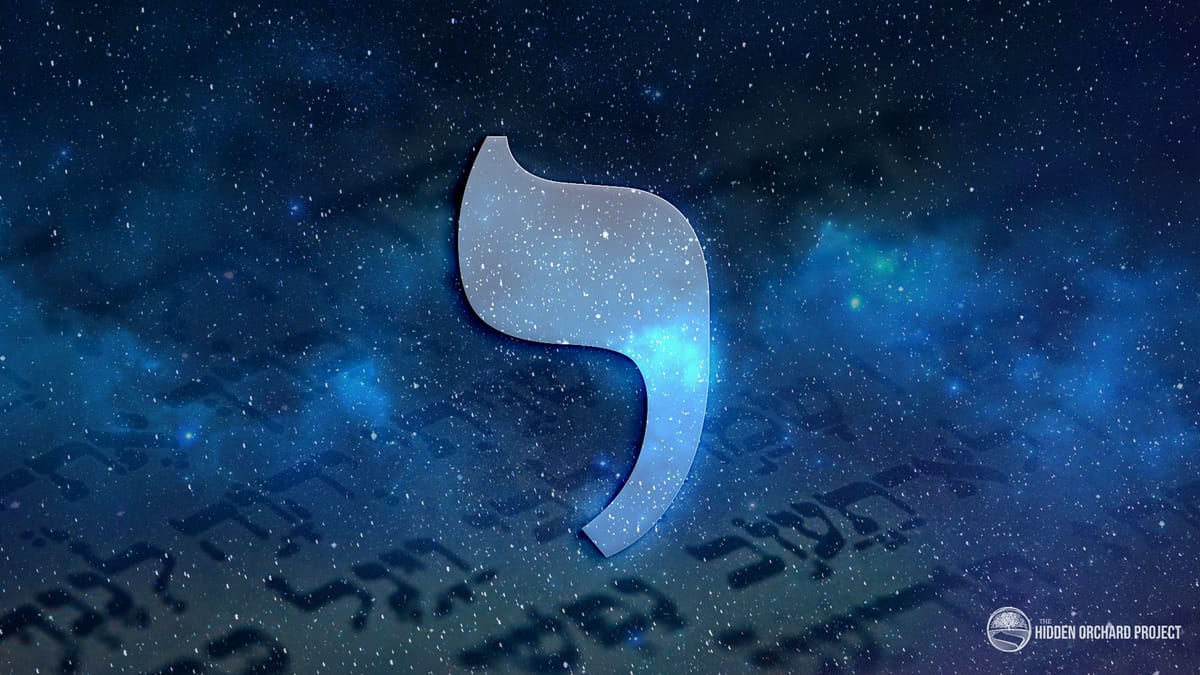
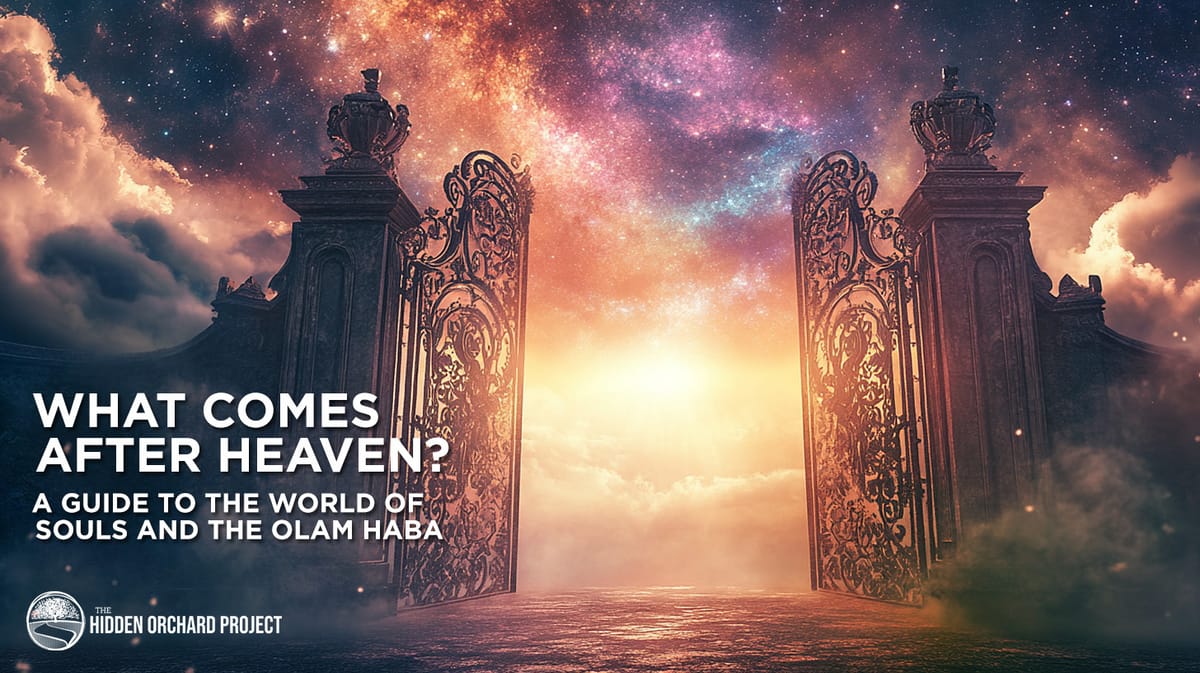
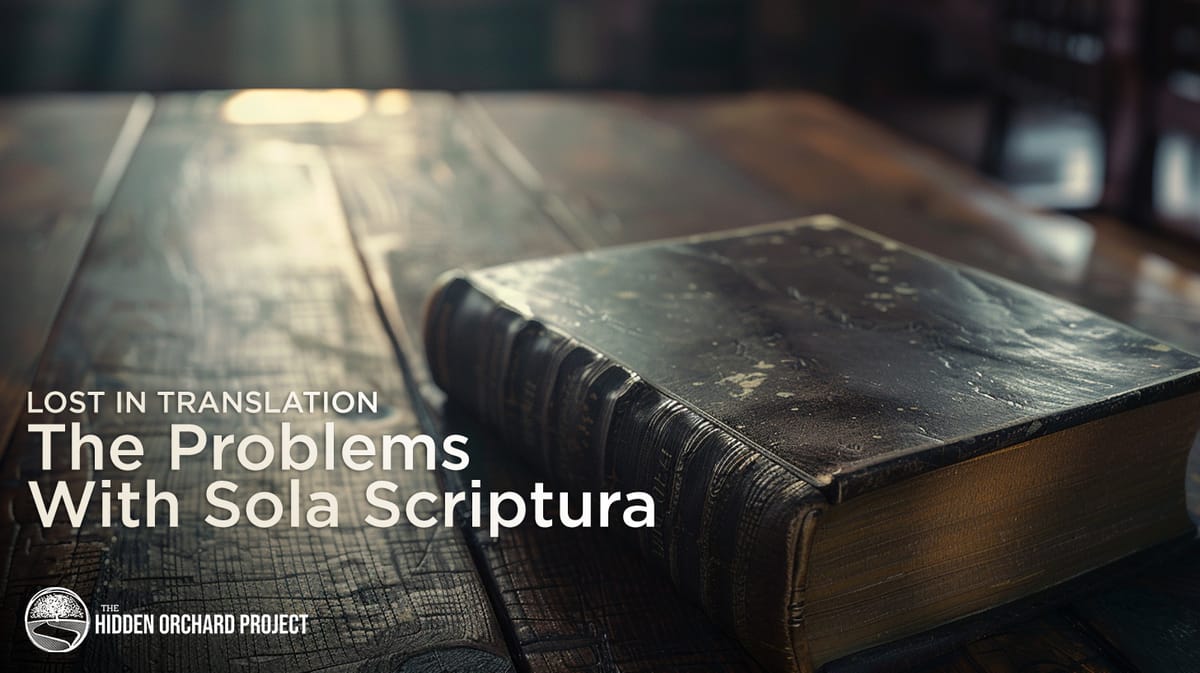
Notes:
¹ Into the Orchard: The Midrashic Tradition in the New Testament. https://a.co/d/4erag6F
² Matthew 2:1
³ Sefer HaYashar (midrash), Book of Genesis, Noach 9-12
⁴ https://www.thehiddenorchard.com/the-hidden-light-ohr-haganuz/
⁵ Exodus Rabbah 1:20; Sotah 12a
⁶ Luke 1:46-56
⁷ Exodus Rabbah 1
⁸ In the Midrash, Yochebed is called by her Egyptian name, Shiphrah. See Rashi on Exodus 1:15
⁹ See the Legend of the Jews 4:4:4 and 4:4:11
"The amazement was great that the son of a slave should be made king. Then the wife of Jesse revealed her secret, and declared herself the mother of David."
Also:
"Our sages also say that when Yishai (David's father) slept with David's mother and David was conceived, this was due to an error on Yishai's part. He had thought that he was sleeping with a maid or concubine" - Shnei Luchot haBrit. Torah Shebiktav. Rabbi Eliyahu Munk. Vayeshev, Miketz, Vayigash, Torah Ohr 160:

